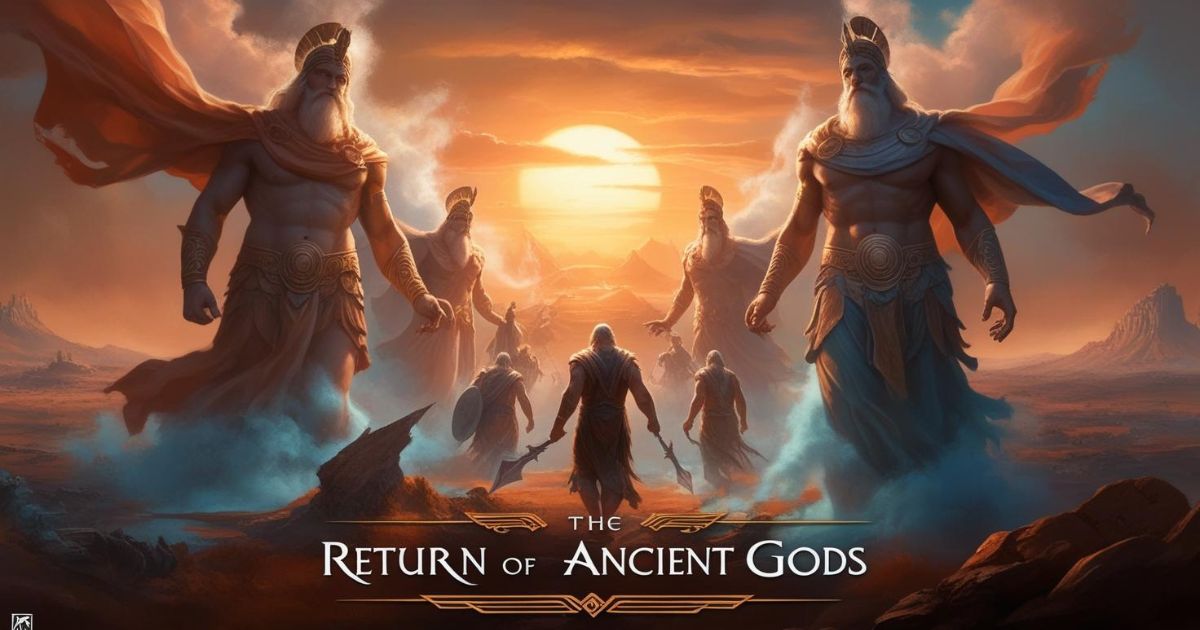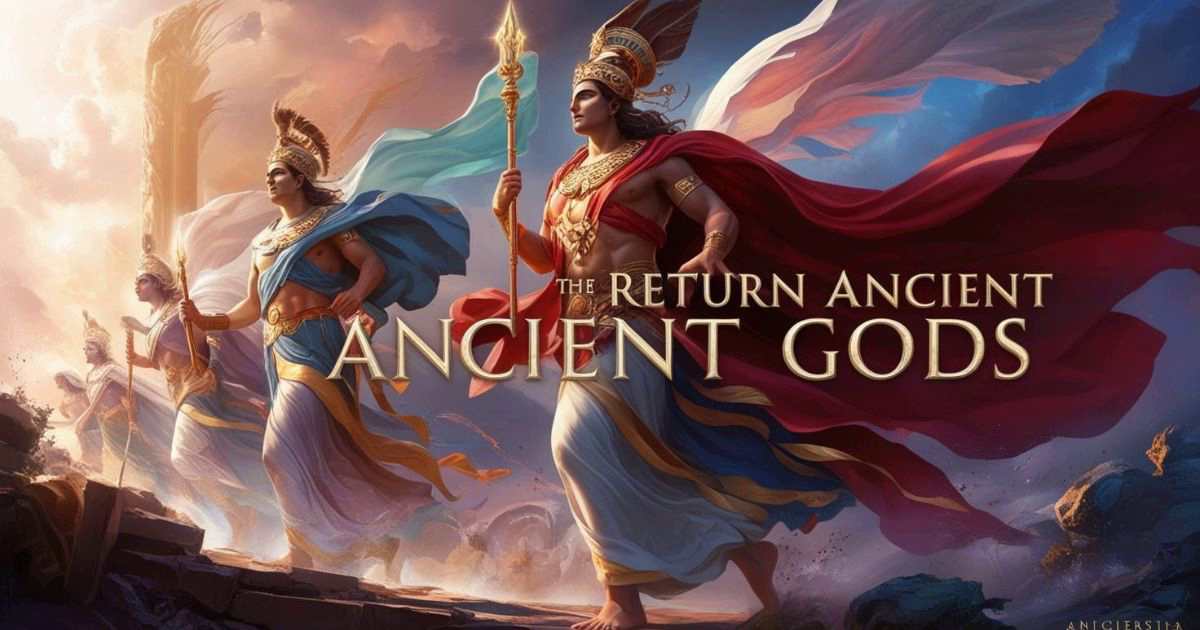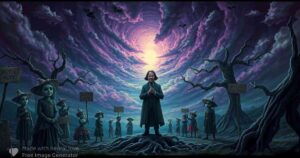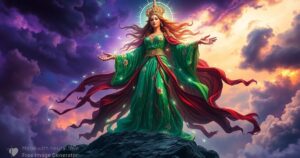
Unveiling Spiritual Forces Behind Modern Culture
In a riveting discussion with Pastor Vlad, Jonathan Cahn, a messianic Jewish rabbi and bestselling author, delves into the profound insights from his book “The Return of the gods.” This eye-opening conversation explores the spiritual underpinnings of modern cultural shifts, drawing parallels between ancient pagan deities and contemporary societal trends.
Cahn’s work, rooted in biblical prophecy and historical analysis, offers a unique perspective on the spiritual battles shaping our world today.
Jonathan Cahn: A Brief Background
Jonathan Cahn’s journey to faith is as compelling as his teachings. Raised in a Jewish home, Cahn became an atheist at age eight, disillusioned by the lack of God’s tangible presence in his life. His spiritual quest led him through various belief systems until a near-death experience with a train prompted him to give his life to God at age 20.
This transformative event set him on a path to become a pastor, leading Beth Israel Worship Center in New Jersey for over 30 years.
Cahn’s first book, “The Harbinger,” became a New York Times bestseller, catapulting him into the spotlight as a prominent spiritual leader. His prophetic ministry has since impacted nations worldwide, with Cahn being named alongside Billy Graham as one of the top 40 spiritual leaders of the last 40 years.
The Central Thesis: The Return of Ancient gods
Cahn’s latest book, “The Return of the gods,” presents a startling premise: the ancient gods of paganism are not mere mythology but represent real spiritual entities that have returned to influence modern society.
This concept is grounded in biblical references, particularly from Deuteronomy and Psalms, where the Hebrew word “shedim” is used to describe these entities not as mythological figures but as spirits with will, volition, and consciousness.
Get instant dream insight with our Free Dream Interpretation App
The Great Exorcism and Its Aftermath
Cahn argues that the spread of Christianity in the Western world represented the greatest mass exorcism in human history, driving out these pagan spirits. However, he warns that any culture that has been delivered from these spirits, if it turns away from God, risks being repossessed by the very same entities.
This spiritual dynamic, according to Cahn, explains the rapid and often perplexing cultural shifts witnessed in recent decades. As Western societies have increasingly distanced themselves from their Judeo-Christian foundations, they have unwittingly opened the door for these ancient spiritual forces to return and reshape culture.
The Dark Trinity: Three Principal Deities
Cahn identifies three primary spiritual entities or “gods” that he believes are at the forefront of this cultural repossession:
1. Baal: The Possessor
Role: Initiates the turning away from God
Manifestations:
- Driving God out of public spaces
- Causing society to forget its spiritual heritage
- Overturning divine moral standards
Cahn points to various cultural shifts, such as the removal of prayer from schools in the 1960s, as evidence of Baal’s influence. He also notes the ironic presence of a bronze bull statue on Wall Street as a modern parallel to the ancient symbol of Baal.

2. Ashtoreth (The Enchantress): Goddess of Sexuality
Role: Promotes sexual immorality and occult practices
Manifestations:
- The sexual revolution
- Pornography
- Revival of occult practices and New Age spirituality
Cahn traces the timing of the sexual revolution and the resurgence of occult interests to the influence of this ancient goddess.
3. Molech: The Destroyer
Role: Demands child sacrifice
Manifestations:
- Abortion
- Exploitation of children
Drawing parallels between ancient child sacrifice practices and modern abortion, Cahn suggests that this spiritual force continues to demand the lives of the innocent.
The Transformer: A Modern Manifestation
Cahn also discusses an aspect of Ashtoreth he calls “The Transformer,” which he believes is behind recent cultural shifts regarding gender and sexuality:
- Blurring of gender distinctions
- Promotion of androgyny
- Challenges to traditional gender roles and family structures
He points to ancient inscriptions that describe this deity’s power to “turn a man into a woman and a woman into a man” as evidence of this spirit’s long-standing influence.
Historical Connections and Modern Parallels
Cahn provides numerous examples of how these ancient spiritual forces manifest in contemporary society:
- The significance of the month of June in pagan worship and its modern association with Pride celebrations
- The rainbow symbol’s appropriation from its biblical meaning
- The timing of significant legal decisions related to sexuality and marriage, coinciding with dates of importance in ancient pagan calendars
Related: The world before Adam
The Christian Response
While Cahn’s analysis paints a sobering picture of spiritual warfare in modern culture, he emphasizes hope and the power available to believers:
- Awareness: Understanding the spiritual nature of cultural shifts
- Boldness: Encouragement to speak truth in love, even in the face of opposition
- Personal Holiness: Removing any connections to these spiritual forces from one’s life
- Faith: Remembering that God is more powerful than any other spiritual entity
- Action: Actively sharing the Gospel and living out Christian values
Conclusion
Jonathan Cahn’s “The Return of the gods” offers a provocative and deeply spiritual perspective on the forces shaping modern society. By drawing connections between ancient pagan practices and contemporary cultural trends, Cahn challenges believers to recognize the spiritual battle underlying societal changes and to stand firm in their faith.
While his interpretations may be controversial, Cahn’s work invites readers to consider the spiritual dimensions of cultural shifts and to reaffirm their commitment to biblical values in an increasingly complex world.
As Western societies continue to grapple with rapid social changes, Cahn’s insights provide a framework for understanding these shifts through a spiritual lens, encouraging believers to engage thoughtfully and prayerfully with the challenges of our time.
NOTE: This article was generated from the video transcript and rewritten with the assistance of AI—see our AI Usage Disclosure for more information.






